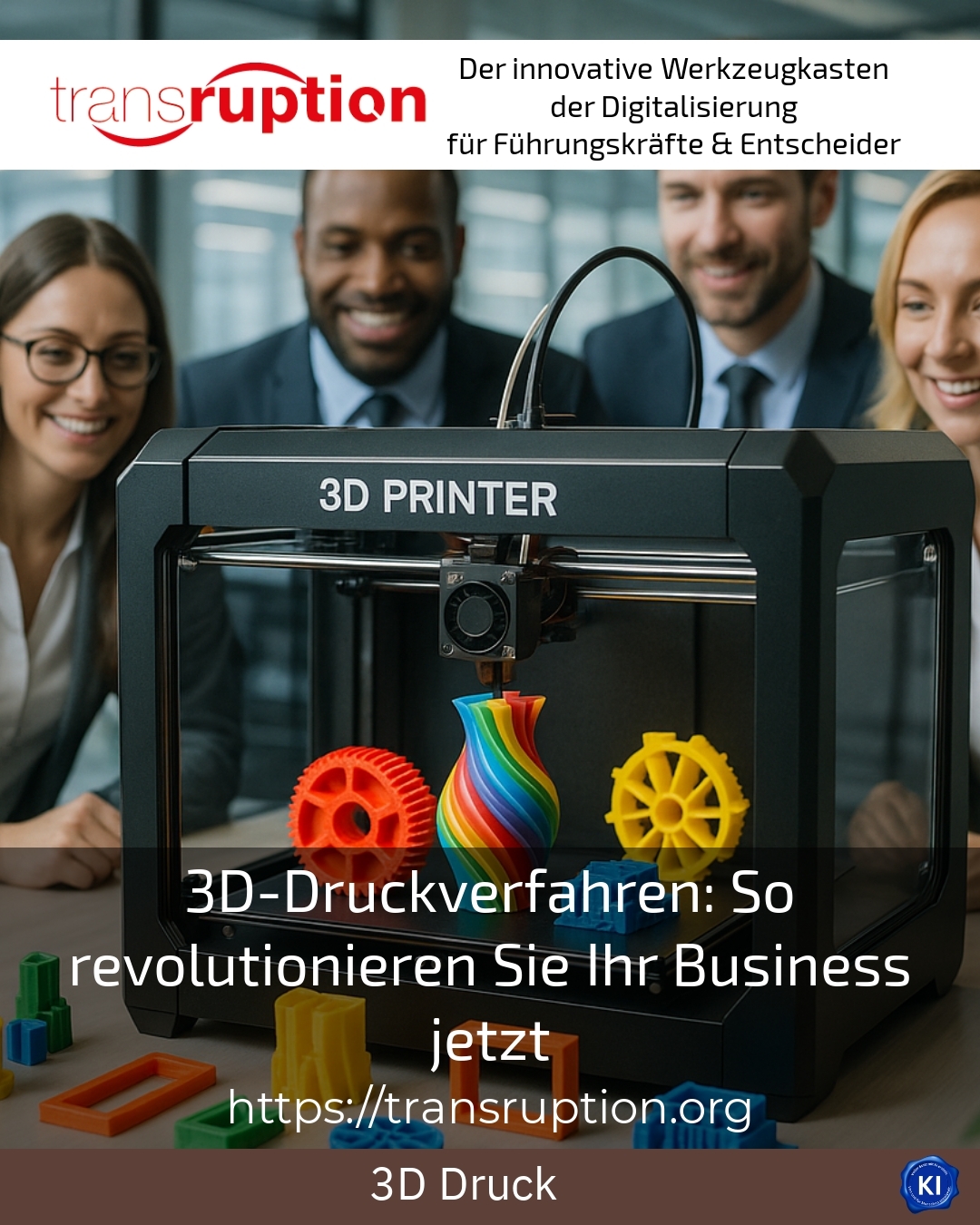The integration of modern 3D printing process opens up a wide range of opportunities for companies to make production processes more efficient and realise innovation potential. Whether in manufacturing, medicine or aerospace - additive manufacturing accompanies projects that master complex challenges and enable new product dimensions. In this article, you will learn how you can make your business fit for the future now with concrete examples and practical tips.
Diversity of 3D printing processes - basics and industrial applications
The world of 3D printing process includes various technologies that differ depending on the material and application. The most common processes include fused deposition modelling (FDM), selective laser sintering (SLS) and stereolithography (SLA). Each of these is suitable for different requirements, from plastic prototypes to high-strength metal components.
In manufacturing, for example, customised tools and moulds are produced using 3D printing. This reduces typical manufacturing costs and significantly shortens development times. A company from Bremen uses the process to produce spray nozzles that are precisely tailored to process requirements and thus optimise adhesive application in conveyor system construction[2]. Such applications demonstrate how 3D printers can contribute to solving specific challenges in day-to-day business.
The automotive industry also benefits greatly from additive manufacturing processes. It produces cost-effective prototypes or complex components with low weight. For example, one manufacturer saves up to 40 per cent of its own weight by using metal 3D printing, which in turn increases fuel efficiency[4][14].
3D printing processes in medicine and beyond
In the field of medical technology 3D printing process completely new possibilities in customised patient care. Customised prostheses and implants are created faster and more precisely than ever before. Digital technology significantly supports process reliability.
One practice shows how SLS technology is used to produce custom-fit shoe insoles that save both costs and production times[4]. Additive manufacturing also supports the production of surgical models that improve planning and optimise the surgical result.
In the research context, bioprinting enables the development of tissue structures for future therapies. Although not a panacea, such innovations provide valuable impetus for the further development of medical applications[8].
Examples from practice
BEST PRACTICE at the customer (name hidden due to NDA contract) Using the SLA process, complex housing components for machine controls could be manufactured. The high precision enabled cost savings of up to 80 per cent compared to conventional methods without compromising on quality.
BEST PRACTICE at the customer (name hidden due to NDA contract) In the area of spare parts supply, obsolete heating components were reproduced using 3D printing, thereby extending the service life of existing systems. This supports sustainable use and minimises the risk of complaints.
BEST PRACTICE at the customer (name hidden due to NDA contract) A shoe manufacturer used 3D printing to develop and test customised sole models with different flexibilities. This made it possible to successfully optimise fit and comfort.
Advantages, challenges and the correct use of 3D printing processes
Additive manufacturing facilitates complex geometries and small batch sizes that would be costly or impossible with traditional processes. This not only reduces costs, but also relieves the burden on supply chains and supports sustainable manufacturing strategies[1][8].
The flexibility of 3D printing also allows products and prototypes to be customised quickly. This allows companies to react more dynamically to market requirements and accelerate product development.
However, good project management and a clear definition of objectives are required to ensure that the right process, material and design are selected. After all, success depends heavily on optimal integration into existing processes. This is where transruptions coaching is often recommended, supporting clients in their 3D printing projects to avoid stumbling blocks and fully utilise potential.
Practical examples of process optimisation
BEST PRACTICE at the customer (name hidden due to NDA contract) Through transruptions coaching, complex component requirements were analysed in a structured manner at an automotive supplier, suitable 3D printing processes were selected and production approval was accelerated.
BEST PRACTICE at the customer (name hidden due to NDA contract) In a logistics company, prototypes for individual fasteners were produced using the 3D printing process with targeted support, which reduced assembly times by 30 per cent.
BEST PRACTICE at the customer (name hidden due to NDA contract) An aerospace company used coaching to optimise lightweight metal components for rocket parts, thereby reducing weight and minimising the use of materials.
My analysis
The diverse possibilities of 3D printing process offer companies today numerous opportunities to rethink production processes and secure competitive advantages. From the development of complex prototypes to the production of spare parts and customised medical technology solutions - additive manufacturing supports processes in a wide range of industries.
Successful projects are based on sound planning, targeted selection of technology and professional support. In this context, transruptions coaching sessions provide important impetus for mastering challenges and implementing innovations sustainably. Companies that invest in 3D printing now are laying valuable building blocks for future-proof business models.
Further links from the text above:
3D printing - Wikipedia [1]
3D printing in industry - Bremen [2]
Types of 3D printers and applications - Formlabs [3]
Areas of application for 3D printing - 3D model [4]
What types of 3D printers are there? [5]
30 applications with 3D printing - 3DDRUCKLIFE [6]
3D printing types overview [7]
3D printing applications overview - 3Druck.com [8]
Overview of current 3D printing processes - 3Druck.com [9]
Unusual 3D printing applications - Formlabs [10]
For more information and if you have any questions, please contact Contact us or read more blog posts on the topic TRANSRUPTION here.
















